Greenhouse irrigation is the process of providing plants with water through various methods. Proper watering is crucial for ensuring healthy plant growth and maximizing yields. Let’s check out the best water management practices for greenhouse irrigation below.
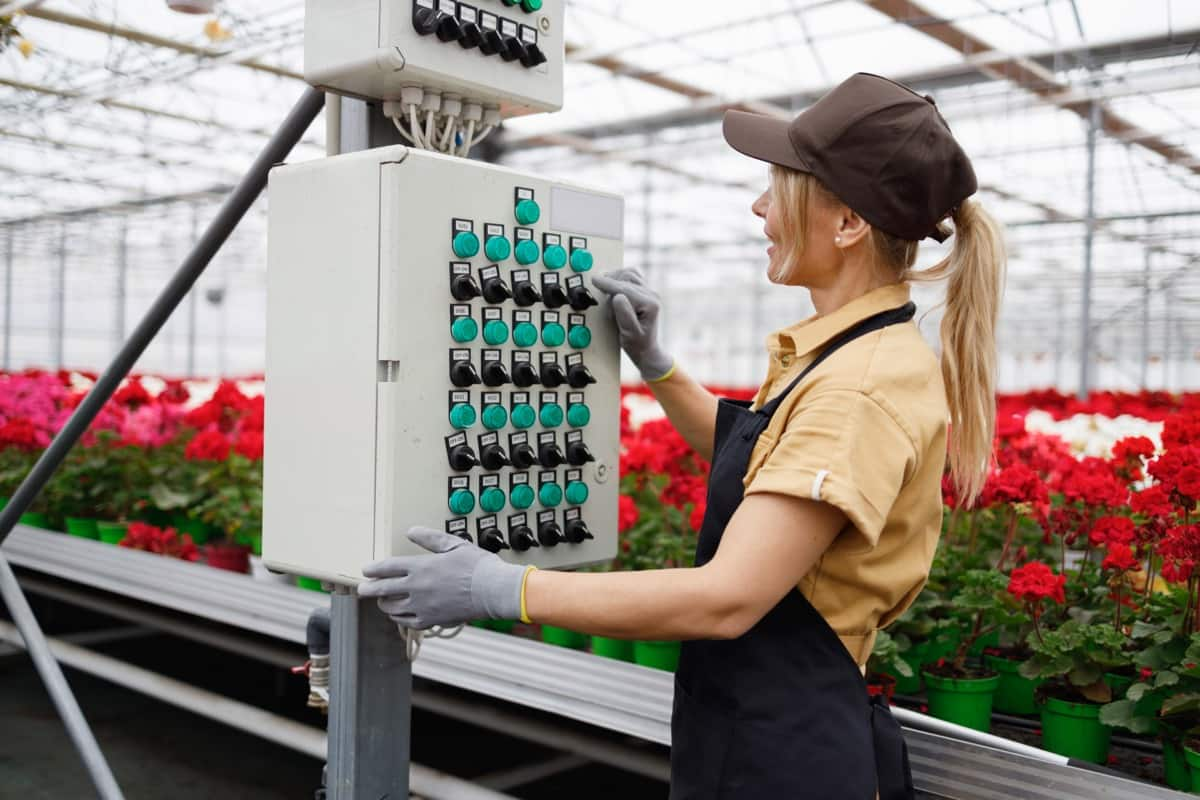
Greenhouse Irrigation and Water Management
Best Water Management Practices for Greenhouse Irrigation
- Monitor soil moisture regularly – This will help determine when and how much water your plants need.
- Use a drip irrigation system – Drip irrigation delivers water directly to the plant roots, minimizing waste and ensuring each plant gets the right amount of water.
- Collect rainwater – Rainwater is free and can be collected using gutters and downspouts. It can be stored in barrels or tanks and used for watering plants.
- Mulch – Applying mulch to the top layer of soil will help retain moisture, reduce evaporation, and keep the soil cool.
- Water early in the day – This allows foliage to dry before nightfall, reducing disease development.
Efficient Water Usage in Greenhouse Irrigation
- Efficient water usage is essential for successful greenhouse irrigation. To achieve this, growers must use appropriate application methods and avoid wastage. One method is using drip irrigation systems that deliver water slowly and directly to the plant roots.
- Another technique for efficient water usage in greenhouse irrigation is scheduling watering times appropriately. Growers should aim to irrigate plants when needed – typically during periods of low humidity or high temperatures when evaporation rates are highest.
- The type of substrate used in a greenhouse can also affect efficient water usage. For example, soil-less substrates tend to have better drainage properties than traditional soils, reducing the risk of over-watering and leaching nutrients from the substrate.
- Ensuring proper maintenance of the irrigation system is also key to conserving water. Regular checks on valves, pipes, nozzles, etc., can prevent leaks that waste valuable resources.
In case you missed it: Rice Cultivation in Greenhouse: A Profitable Business Plan for Sustainable Farming
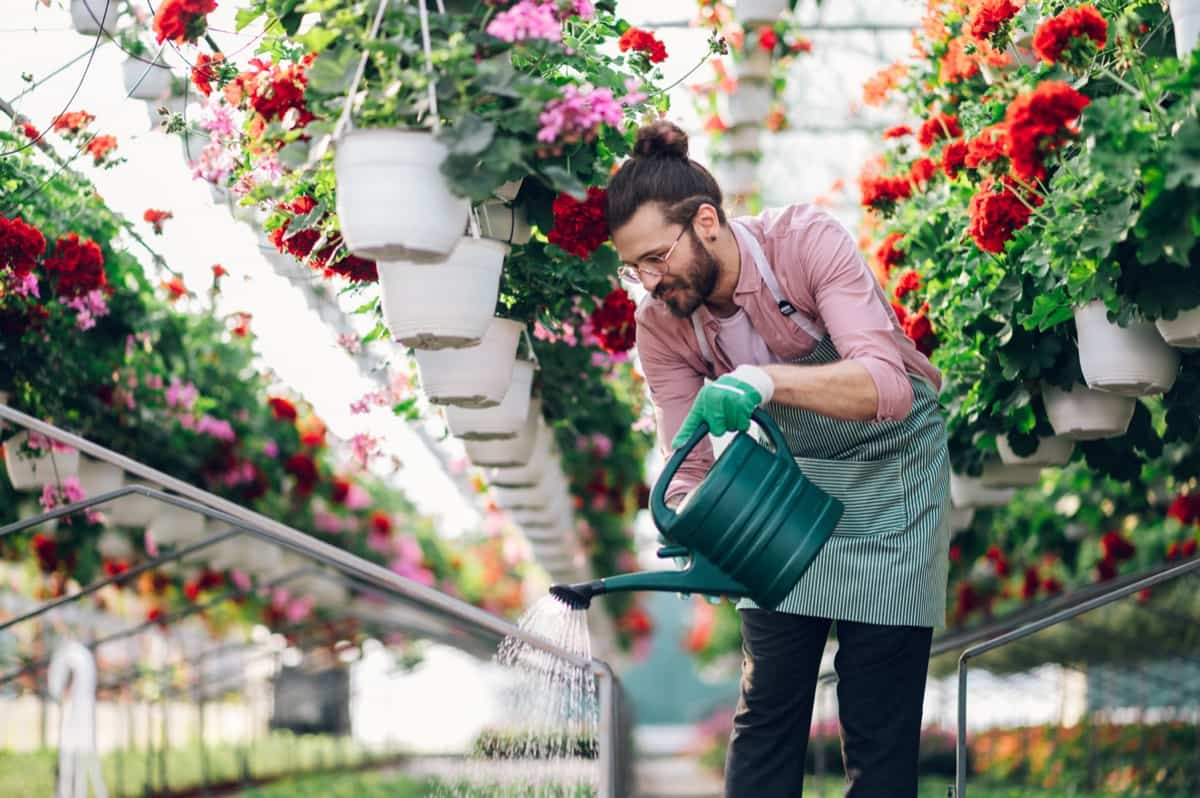
Water-Saving Techniques for Greenhouse Irrigation
- One of the effective ways to conserve water is drip irrigation systems delivering water directly to plant roots. This method reduces evaporation and runoff, allowing plants to absorb more nutrients while ensuring efficient use of available resources.
- Another technique uses a rainwater harvesting system that collects and stores precipitation from rooftops or other surfaces. The collected rainwater can be used later for greenhouse irrigation purposes when needed.
- Choosing drought-resistant plants can also help save on watering needs as they require less frequent watering than others, reducing overall consumption.
- Proper soil management techniques, such as adding organic matter and mulching, can improve moisture retention in the soil.
Greenhouse Irrigation Systems for Water Conservation
- Greenhouse irrigation systems ensure plants receive the necessary water to grow and thrive. One approach uses subsurface drip irrigation (SDI) systems that deliver water to the root zone via buried drip tapes or hoses. This method minimizes evaporation and runoff while delivering precise amounts of water where needed most.
- Another technique is rainwater harvesting, which involves collecting rainwater from the roof of a greenhouse into storage tanks or containers for later use in watering plants. This conserves precious freshwater resources and reduces stormwater runoff that can cause flooding and erosion.
- Automated weather-based controllers can help conserve water by adjusting watering schedules based on real-time data, such as rainfall levels and humidity levels inside the greenhouse.
Optimal Irrigation Schedule for Greenhouse Plants
- When it comes to greenhouse irrigation, timing is everything. The optimal irrigation schedule for your plants will depend on several factors, such as crop type, climate, and growing medium.
- For some crops, like lettuce or herbs, frequent but light irrigations are essential to maintain soil moisture and prevent wilting. On the other hand, fruiting crops like tomatoes require less frequent but deeper irrigations to encourage root growth and prevent blossom end rot.
- Watering during early morning hours can reduce evaporation losses while providing enough time for foliage to dry before nightfall which helps reduce fungal diseases.
Drip Irrigation Solutions for Greenhouse Water Management
Drip irrigation is a highly efficient and water-saving method of watering plants in the greenhouse. It involves delivering water slowly and directly to the plant roots via a pipeline installed just above or below the soil surface. This system helps reduce water wastage, as it applies only the amount required by each plant. Drip Irrigation saves up to 70% more water than traditional methods; this saves the cost spent on labor used when manually irrigating crops while providing optimal growth conditions for plants.
In case you missed it: How to Grow Lettuce at Home with Seeds and Without Seeds
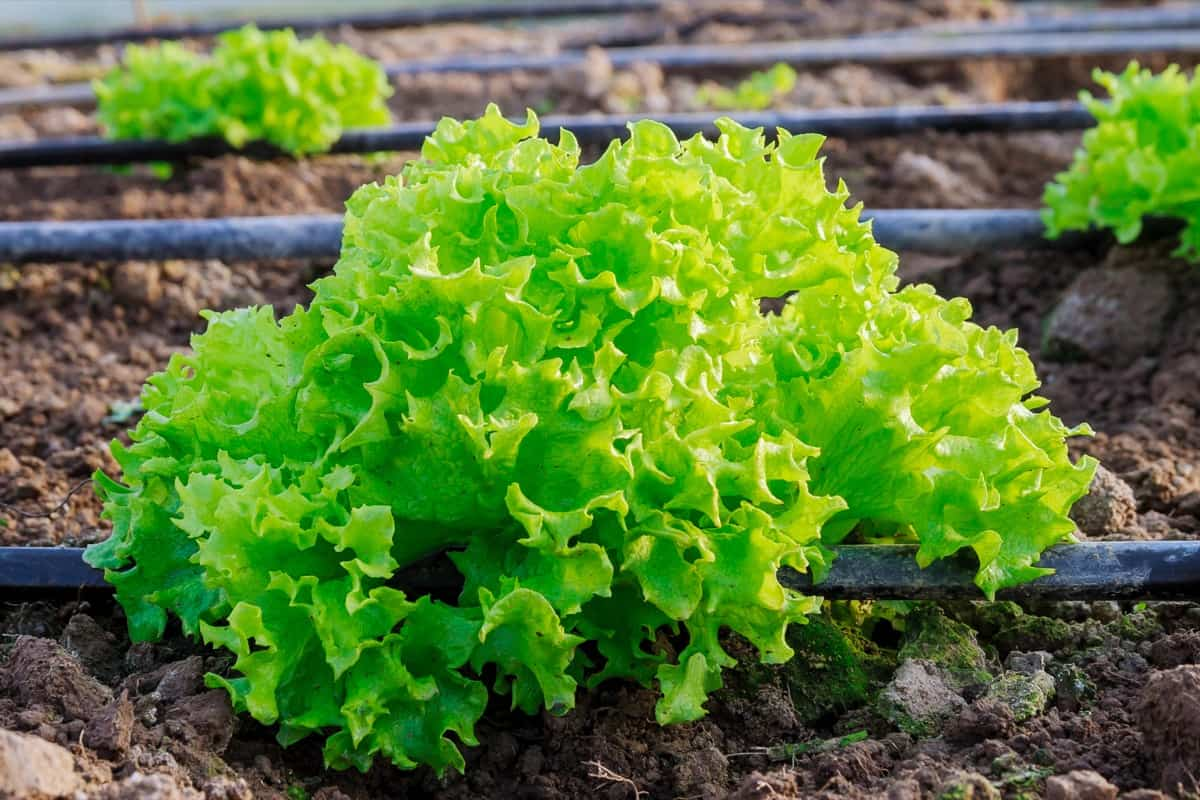
Water-Efficient Greenhouse Irrigation Methods
Overhead systems – Overhead systems apply water to the substrate surface from above. Overhead irrigation can be done using various tools, including sprinklers or misting nozzles that deliver precise amounts of water over large areas. Overhead irrigation systems apply water directly to the substrate surface from above, typically using spray nozzles or sprinklers.
Subsurface systems – Subsurface systems apply water to the base of the root zone, relying on capillary action to bring water into the root zone from below. Subsurface irrigation involves tubing beneath the soil level where pipes release small streams directly onto roots via drippers or emitters.
Smart Water Management in Greenhouse Cultivation
- Smart water management in greenhouse cultivation involves using advanced technologies and strategies to optimize irrigation practices. One such technology uses sensors that measure soil moisture levels, allowing growers to adjust watering schedules based on plant needs.
- Another smart water management strategy is using recycled or reclaimed water sources. This conserves freshwater resources and reduces waste by repurposing wastewater from other processes.
- In addition, implementing a closed-loop irrigation system can help minimize water loss through evaporation and runoff. By recirculating and filtering irrigation solutions, growers can reduce water usage while providing plants with the necessary nutrients.
- Automated drip irrigation systems are another tool for smart water management in greenhouses. These systems deliver precise amounts of water directly to plant roots, reducing waste and ensuring more efficient nutrient uptake.
Sustainable Water Practices for Greenhouse Gardens
- One way method is through the use of rainwater harvesting systems. By collecting and storing rainwater, growers can reduce their dependence on municipal or well water sources and save money.
- Another sustainable practice is using recycled water from other processes, such as aquaponics or hydroponics. This method conserves water and provides nutrients for plants while reducing waste.
- Growers can also implement strategies such as mulching and using drought-tolerant plants to conserve water.
Reducing Water Waste in Greenhouse Irrigation
- Reducing water waste is crucial for efficient greenhouse irrigation. One main method of water wastage is overhead irrigation systems, which can lead to excessive runoff and evaporation. To minimize this issue, consider switching to a subsurface irrigation system that delivers water directly to plant roots.
- Another method to reduce water waste is by implementing smart scheduling practices. This involves monitoring weather patterns and adjusting watering schedules accordingly. For example, plants may not need as much watering if it has rained recently or humidity levels are high.
- Proper maintenance of your greenhouse irrigation system can also help reduce wasted water. Regularly inspecting pipes and valves for leaks can prevent unnecessary loss of water. Also, properly calibrating your system ensures you deliver the right amount of water without over-watering.
In case you missed it: A Guide to Understanding Irrigation Management: Check How this Helps Farmers
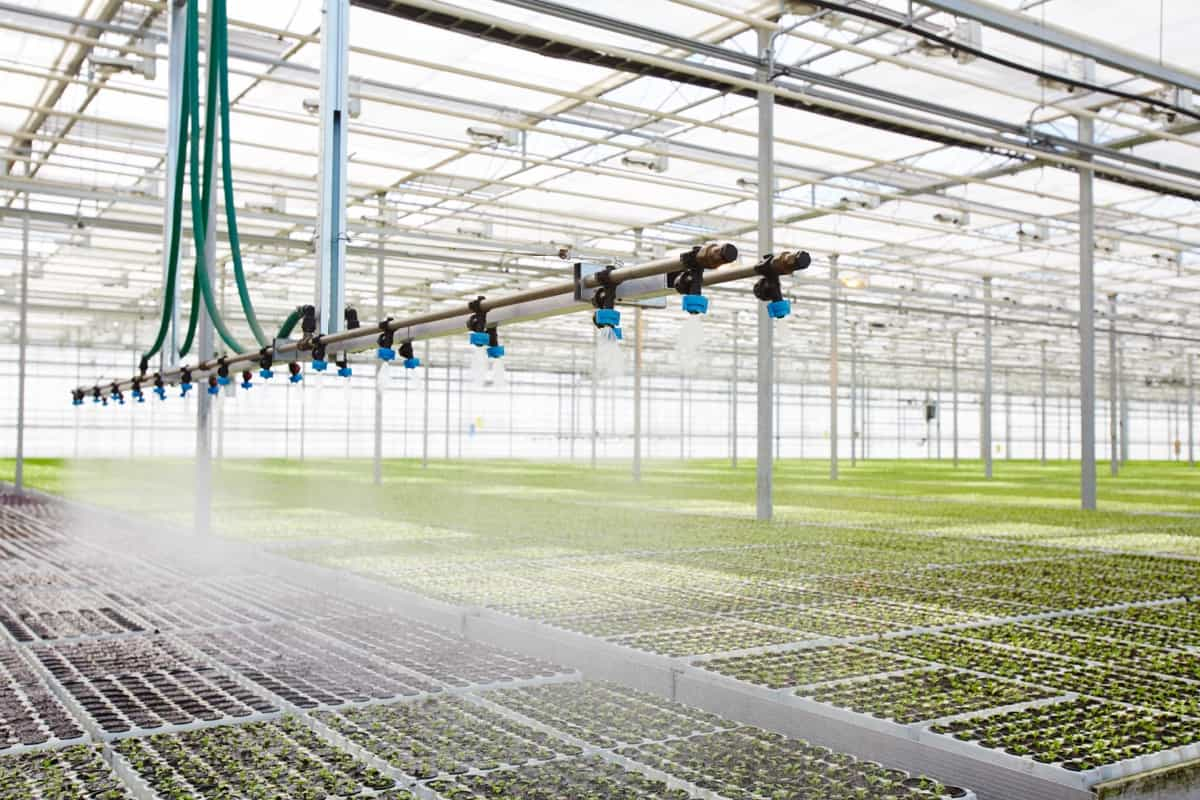
Greenhouse Irrigation Tips for Water Conservation
- Greenhouse irrigation is essential for the growth of plants, but it can also lead to water wastage if not managed properly.
- Use a moisture meter or soil sensor to determine when plants need watering. Overwatering can result in excess runoff and waste of water resources.
- Consider installing a rainwater harvesting system that collects rainfall from the roof of your greenhouse. This water can be used for irrigation instead of relying solely on municipal water sources.
- Choose an efficient irrigation system, such as drip irrigation, over traditional overhead systems. It delivers water directly to plant roots and reduces evaporation losses significantly.
- Additionally, mulching around plants with organic materials like leaves or straw helps retain moisture in the soil and reduces the frequency of watering required.
- Regularly check pipes and hoses for leaks, as these unnoticed drips contribute significantly to wasted resources while increasing utility bills unnecessarily.
Greenhouse Farming Water Sources
Greenhouse farming requires a sustainable water source to keep the plants healthy and productive. Various irrigation water sources are used in greenhouse production systems, such as groundwater from wells, surface water, drainage ponds, rain, and municipal water.
Amount Of Water Needed for Greenhouse Farming
- It’s also essential to consider the appropriate amount of water needed for your greenhouse farming. For instance, a 30 feet x 100 feet greenhouse farm with 200 square meters of benches requires a peak use rate of 2,720 to 3,600 liters/day.
- You can reduce water usage by implementing sustainable water practices and smart irrigation methods in your greenhouse cultivation while ensuring optimal plant growth conditions. Greenhouse farmers play a vital role in preserving our planet’s resources by efficiently managing their use of natural resources like water.
Precision Irrigation Techniques for Greenhouse Cultivation
Precision irrigation techniques have revolutionized greenhouse cultivation by providing a targeted approach to watering plants. These techniques include drip irrigation, micro-sprinklers, and fogging systems.
In case you missed it: 16 Key Rules for Effective Irrigation Management: From Planning to Reduce Production Cost
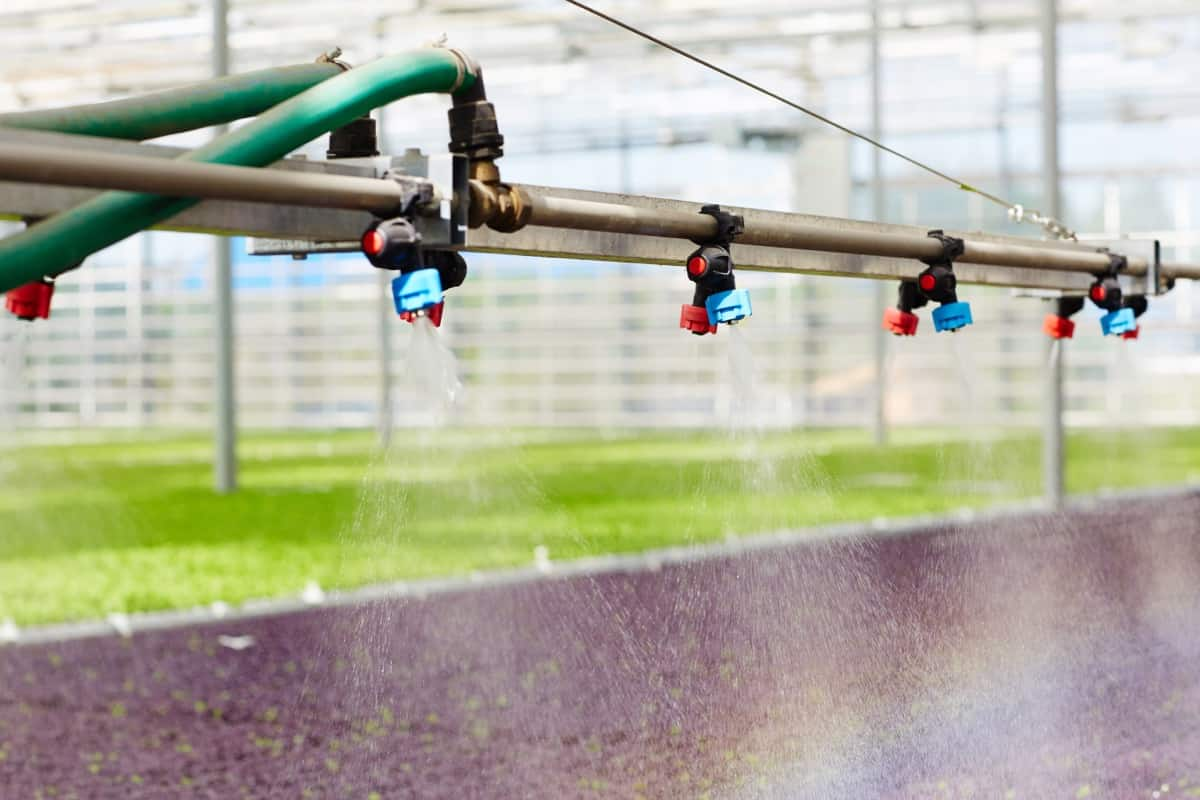
Balancing Water Supply and Demand in Greenhouse Farming
- It is crucial in greenhouse farming to ensure optimal plant growth and health.
- One way to monitor water needs is by using soil moisture sensors that measure the moisture in the soil. These sensors can help you determine when to irrigate and how much water your plants need.
- Another method is through careful observation of plant behavior. For example, if leaves are drooping or turning yellow, it may be a sign that they need more water.
Improving Water Distribution in Greenhouse Irrigation
- Improving water distribution in greenhouse irrigation is a crucial aspect of ensuring the health and growth of crops. Proper water distribution ensures that plants receive enough moisture to grow while avoiding excess moisture, which can lead to root rot problems and other problems.
- One method to improve water distribution is by using drip irrigation systems. This method saves on water usage and minimizes runoff.
- Another method for improving water distribution is using overhead sprinklers or misting systems. These are ideal for larger greenhouses since they cover more than drip systems. However, monitoring humidity levels when using these methods is important, as over-saturation can cause mold growth.
Water Management Strategies for Hydroponic Greenhouse Systems
- Hydroponic greenhouse systems are becoming increasingly popular due to their ability to maximize water usage and provide consistent crop yields. However, proper water management is crucial for the success of these systems.
- One important strategy is to closely monitor and control the nutrient solution levels in the system. This can be done using electrical conductivity (EC) meters or other sensors that measure pH levels and nutrient content. Regularly adjusting these levels ensures plants receive adequate nutrients without wasting excess water.
- Another strategy is to use recirculating hydroponic systems, which reuse any unused nutrient solution instead of disposing of it. By recycling this solution, growers can save large amounts of water while reducing fertilizer costs.
- Drip irrigation is another effective method for watering plants in hydroponic greenhouses, as it delivers small quantities of water directly to plant roots. This reduces waste from evaporation or runoff, ensuring each plant receives only the water it needs.
Rainwater Harvesting for Greenhouse Irrigation
It is an eco-friendly and cost-effective way to obtain water for greenhouse irrigation. It involves collecting rainwater from rooftops or gutters and storing it in a tank or reservoir for later use. To ensure the quality of harvested rainwater, it’s important to filter out debris and contaminants before storage.
Monitoring and Controlling Water Usage in Greenhouse Cultivation
- One effective way to monitor water usage is through sensors that measure soil moisture levels. These sensors can be placed at various depths throughout the growing medium to provide accurate data on when irrigation is needed.
- Water usage can be controlled through several methods, including drip irrigation and fertigation systems.
- Automated control systems are also available for monitoring and controlling greenhouse watering schedules. These systems use real-time data from sensors and weather forecasts to adjust watering schedules as needed, ensuring optimal growing conditions while minimizing waste.
Automated Irrigation Systems for Water-Efficient Greenhouses
- Automated irrigation systems have revolutionized the way water is distributed in greenhouses. These systems use sensors and computer programs to manage the water received based on individual needs.
- Moreover, automated systems can be programmed to irrigate at specific times and durations for maximum efficiency. This eliminates human error and ensures consistent watering throughout the day.
In case you missed it: Unlocking the Success: Combating Stress and Increasing Yield through Vegetable Grafting

Effective Water Management for Year-Round Greenhouse Production
- By implementing effective water management strategies and precision irrigation techniques, greenhouse farmers can ensure year-round production of high-quality crops while conserving water resources. The key to successful greenhouse irrigation is balancing water supply, demand, and distribution.
- Greenhouse farmers must also be mindful of environmental factors such as temperature and humidity affecting plant growth and water requirements. By investing in automated systems for monitoring and controlling water usage, growers can optimize crop yields while minimizing waste.
- In addition to traditional sources like well or municipal water supplies, rainwater harvesting offers an excellent alternative for sustainable greenhouse irrigation.
Conclusion
Greenhouse irrigation involves the controlled water application to plants within an enclosed structure to maintain optimal crop growth conditions. Greenhouse irrigation is a micro-irrigation system that preserves water and nutrients by letting water drip to the roots of plants via a pipeline installed either just above or below the soil surface.
- How to Build a Low-budget Goat Shed: Cheap Ideas and Tips
- Goat Farming Training Programs in India: A Beginner’s Guide
- Types of Pesticides Used in Agriculture: A Beginner’s Guide
- Economical Aquaculture: A Guide to Low-Budget Fish Farming
- 15 Common Planting Errors That Can Doom Your Fruit Trees
- How to Make Houseplants Bushy: Effective Tips and Ideas
- Innovative Strategies for Boosting Coconut Pollination and Yield
- Pollination Strategies for Maximum Pumpkin Yield
- The Complete Guide to Chicken Fattening: Strategies for Maximum Growth
- Natural Solutions for Tulip Problems: 100% Effective Remedies for Leaf and Bulb-Related Issues
- Revolutionizing Citrus Preservation: Towards a Healthier, Greener Future
- Natural Solutions for Peony Leaf and Flower Problems: 100% Effective Remedies
- Maximizing Profits with Avocado Contract Farming in India: A Comprehensive Guide
- Natural Solutions for Hydrangea Problems: 100% Effective Remedies for Leaf and Flowers
- The Ultimate Guide to Choosing the Perfect Foliage Friend: Bringing Life Indoors
- From Sunlight to Sustainability: 15 Ways to Use Solar Technology in Agriculture
- The Ultimate Guide to Dong Tao Chicken: Exploring from History to Raising
- The Eco-Friendly Makeover: How to Convert Your Unused Swimming Pool into a Fish Pond
- Mastering the Art of Delaware Chicken Farming: Essentials for Healthy Backyard Flocks
- 20 Best Homemade Fertilizers for Money Plant: DIY Recipes and Application Methods
- How to Craft a Comprehensive Free-Range Chicken Farming Business Plan
- Brighten Your Flock: Raising Easter Egger Chickens for Beauty and Bounty
- How to Optimize Your Poultry Egg Farm Business Plan with These Strategies
- Subsidy for Spirulina Cultivation: How Indian Government Schemes Encouraging Spirulina Farmers
- Ultimate Guide to Raising Dominique Chickens: Breeding, Feeding, Egg-Production, and Care
- Mastering the Art of Raising Jersey Giant Chickens: Care, Feeding, and More
- Ultimate Guide to Raising Legbar Chickens: Breeding, Farming Practices, Diet, Egg-Production
- How to Raise Welsummer Chickens: A Comprehensive Guide for Beginners
- How to Protect Indoor Plants in Winter: A Comprehensive Guide
- Ultimate Guide to Grow Bag Gardening: Tips, Tricks, and Planting Ideas for Urban Gardeners
- Guide to Lotus Cultivation: How to Propagate, Plant, Grow, Care, Cost, and Profit
- Agriculture Drone Subsidy Scheme: Government Kisan Subsidy, License, and How to Apply Online
- Ultimate Guide to Raising Araucana Chickens: Breed Profile, Farming Economics, Diet, and Care
- Bringing Hydroponics to Classroom: Importance, Benefits of Learning for School Students
- Ultimate Guide to Raising Polish Chickens: Breed Profile, Farming Economics, Diet, and Care
- Ultimate Guide to Raising Australorp Chickens: Profile, Farming Economics, Egg Production, Diet, and Care